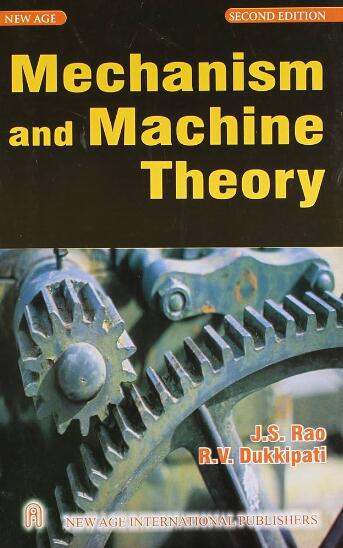Transmission error modeling and control for a swing roller movable teeth transmission considering load based on quasi-static assumptions
IF 4.5
1区 工程技术
Q1 ENGINEERING, MECHANICAL
引用次数: 0
Abstract
A swing roller movable teeth transmission (SRMTT) has compact structure and large speed ratio due to its unique structure. However, because its multi-tooth meshing characteristics, the influence of error-deformation coupling on the transmission error is more sensitive under load. In this work, a link equivalent mechanism model is proposed and error coordinate systems built on each component are established. Links size and theirs error and deformation vectors are defined to establish a load transmission error model. Considering the coordination relationship of multi-tooth meshing deformation, the transmission error solving strategy of coupling error and deformation is developed by tooth by tooth clearance method. Through comparative analysis of load sharing coefficient and transmission error under the disturbance of machining errors of each component, the disturbance rule and influence magnitude of each error are clarified. Based on this, four schemes are designed to realize the active control of machining precision level of key error terms under load. Experiments verify the correctness of transmission error theoretical model and the effectiveness of error control approach.
基于准静态假设考虑载荷的摆滚子动齿传动误差建模与控制
摆滚子动齿传动由于其独特的结构特点,具有结构紧凑、速比大的特点。但由于其多齿啮合特性,在载荷作用下,误差-变形耦合对传动误差的影响更为敏感。提出了一种连杆等效机构模型,并建立了各部件的误差坐标系。定义连杆尺寸及其误差和变形向量,建立荷载传递误差模型。考虑多齿啮合变形的协调关系,提出了以齿对齿间隙法求解耦合误差与变形的传动误差策略。通过对各部件加工误差扰动下的负载分担系数和传动误差的对比分析,明确了各误差的扰动规律和影响程度。在此基础上,设计了四种方案,实现了关键误差项在载荷作用下加工精度水平的主动控制。实验验证了传输误差理论模型的正确性和误差控制方法的有效性。
本文章由计算机程序翻译,如有差异,请以英文原文为准。
求助全文
约1分钟内获得全文
求助全文
来源期刊

Mechanism and Machine Theory
工程技术-工程:机械
CiteScore
9.90
自引率
23.10%
发文量
450
审稿时长
20 days
期刊介绍:
Mechanism and Machine Theory provides a medium of communication between engineers and scientists engaged in research and development within the fields of knowledge embraced by IFToMM, the International Federation for the Promotion of Mechanism and Machine Science, therefore affiliated with IFToMM as its official research journal.
The main topics are:
Design Theory and Methodology;
Haptics and Human-Machine-Interfaces;
Robotics, Mechatronics and Micro-Machines;
Mechanisms, Mechanical Transmissions and Machines;
Kinematics, Dynamics, and Control of Mechanical Systems;
Applications to Bioengineering and Molecular Chemistry
 求助内容:
求助内容: 应助结果提醒方式:
应助结果提醒方式:


